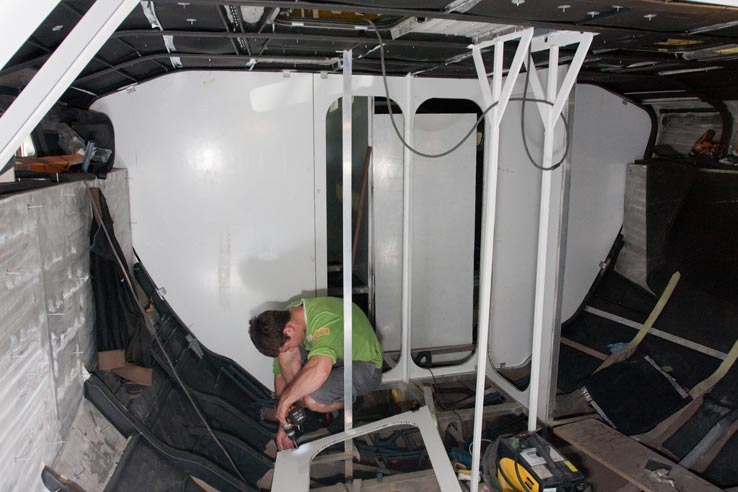The first interior bulkhead wall is up. Unfortunately you can’t see the nice woodwork since it won’t be mounted until the last moment. But you can see the system we are using to make it possible to dismantle the interior for repairs or changes.
Most modern yacht are put together using glue, because this makes serial production cheap. My last big yacht was a Beneteau First 47.7, which quickly started to fall to pieces when sailed for real. Like most serial production yachts, it was built for the occasional race, not for permanent duty. And when time came to repair it, it was impossible, because the interior was glued to the hull. So the entire front cabin interior had to be scrapped, and rebuilt from new material after the hull was bonded together again.

So the Journeyman interior is possible to remove without destroying it. It is screwed to small aluminum mounting brackets welded to the frames. Of course this means that you will be able to see a lot of screw heads on the walls. I like that. Some people probably don’t. But I don’t consider them the target audience of this boat.
Anyway, the interior is built from modern high tech composite materials, except for some trims and fillet which are made from Walnut wood. No paint is used on any surface, only solid materials that can withstand scratches and hard use without damage. All panels are aluminum honeycomb, which is extremely stiff for its light weight. The walls use 15mm thick panels with thin fiberglass skins, and the floors use 22mm thick panels with aluminum skins:

